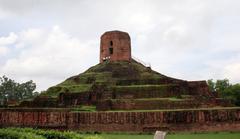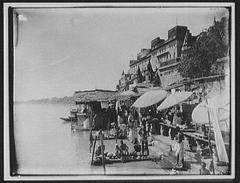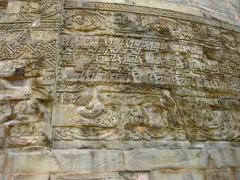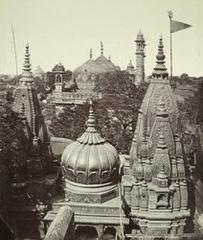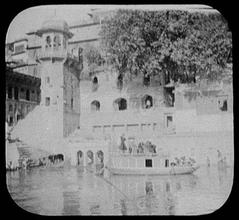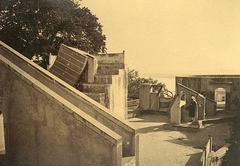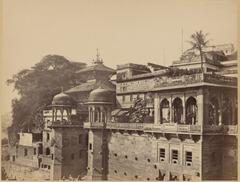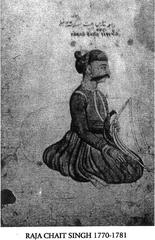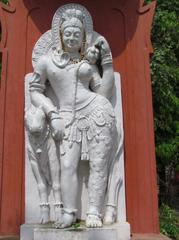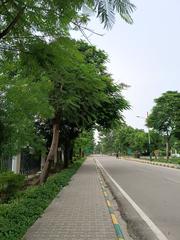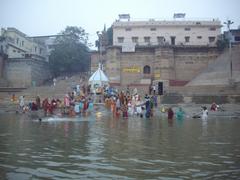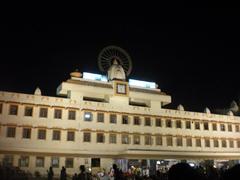
Sarnath Museum Visiting Hours, Tickets, and Varanasi Historical Sites Guide
Date: 04/07/2025
Introduction
The Sarnath Museum, situated near Varanasi in Uttar Pradesh, is one of India’s premier destinations for exploring the country’s Buddhist heritage and ancient art. Established in 1910 by the Archaeological Survey of India (ASI), it preserves an exceptional array of artifacts discovered at Sarnath—the site where Gautama Buddha delivered his first sermon in 528 BCE. The museum’s collection, including the world-renowned Lion Capital of Ashoka (now India’s national emblem), offers a unique window into the evolution of Buddhist art, religious life, and the sociocultural history of the region. Proximate to other significant monuments such as the Dhamek Stupa and Chaukhandi Stupa, Sarnath Museum serves as a vital link between India’s past and present, making it a must-visit for travelers, pilgrims, and scholars alike (cultureandheritage.org; historified.in; sarnathmuseumasi.org).
Contents
- Introduction
- Origins and Establishment of Sarnath Museum
- Archaeological Discoveries and Collections
- Sarnath’s Role in Buddhist History
- Architectural and Artistic Significance
- Visiting Sarnath Museum: Practical Information
- Visiting Hours
- Ticket Prices
- Accessibility
- Guided Tours and Special Events
- Photography
- Travel Tips
- Pilgrimage, Tourism, and National Identity
- Cultural Sensitivity and Etiquette
- Nearby Attractions
- Preservation and Conservation
- Frequently Asked Questions (FAQ)
- Conclusion
- Sources
Origins and Establishment of Sarnath Museum
The Sarnath Museum was founded in 1910 by the Archaeological Survey of India to protect and display the rich archaeological finds from Sarnath. The site’s significance was brought to light through excavations led by British archaeologists, including Sir John Marshall, which revealed remarkable artifacts from as early as the 3rd century BCE. The museum’s design is inspired by the traditional Buddhist vihara, enhancing the visitor’s immersion in the region’s spiritual and historical legacy (cultureandheritage.org).
Archaeological Discoveries and Collections
With over 6,800 artifacts, the museum’s collection includes:
- Lion Capital of Ashoka: A 3rd century BCE sandstone sculpture, now India’s national emblem.
- Buddhist Sculptures: Depictions of Buddha and Bodhisattvas from the Mauryan through Gupta periods.
- Inscriptions and Edicts: Stone records in Brahmi script illuminating ancient social and religious life.
- Architectural Fragments: Elements from stupas and monasteries, including capitals and railings.
These objects narrate the rise of Sarnath as a center of Buddhist learning and artistry (travelsetu.com).
Sarnath’s Role in Buddhist History
Sarnath is celebrated as the site where Buddha set the Wheel of Dharma in motion, delivering his first sermon and establishing the Buddhist Sangha. Emperor Ashoka’s 3rd century BCE patronage led to the construction of iconic pillars and stupas, further cementing the site’s spiritual importance through successive dynasties (historified.in).
Architectural and Artistic Significance
The museum’s exhibits trace Buddhist art’s evolution:
- Mauryan Period (3rd century BCE): Exemplified by polished sandstone and the Lion Capital.
- Kushana and Gupta Periods (1st–6th centuries CE): Characterized by the serene Buddha images and refined iconography.
- Later Periods: Show the continued influence of Sarnath’s art across Asia.
Visiting Sarnath Museum: Practical Information
Visiting Hours
- Museum: 9:00 AM – 5:00 PM, closed Fridays and national holidays (sarnathmuseumasi.org)
- Archaeological Park: Sunrise to sunset
Ticket Prices
- Indian Citizens: ₹25
- Foreign Nationals: ₹100–₹300 (varies by source)
- Children under 15: Free
Accessibility
- Wheelchair access is provided in main areas; ramps and accessible restrooms are available.
- Advance notice is recommended for specific needs.
Guided Tours and Special Events
- Guided tours are available and highly recommended for in-depth understanding. Book at the museum or Modern Reception Centre.
- Special exhibitions and events are held during Buddhist festivals.
Photography
- Photography is prohibited inside the museum galleries to protect artifacts (sarnathmuseumasi.org).
- Photography is generally allowed in outdoor areas (stupas, temples, archaeological park).
Travel Tips
- Best time to visit: October to March (pleasant weather).
- Plan 1–2 hours for the museum; wear comfortable shoes and carry water.
- Combine your visit with nearby sites for a comprehensive experience.
Pilgrimage, Tourism, and National Identity
Sarnath is one of Buddhism’s four principal pilgrimage destinations, drawing devotees and tourists from around the world. The Lion Capital of Ashoka, preserved here, is a powerful national symbol, representing India’s values of peace and tolerance since its adoption in 1950 (travelsetu.com).
Cultural Sensitivity and Etiquette
Respecting a Sacred Site
- Dress modestly (cover shoulders and knees).
- Remove shoes before entering temples.
- Speak softly; maintain a respectful silence.
- Do not touch the displays; many are ancient and fragile.
- Avoid photography inside galleries; follow posted guidelines.
Interacting with Pilgrims and Monastics
- Greet monks/nuns with a slight bow or “Namaste”; avoid physical contact.
- Give space to those engaged in rituals or meditation.
- Be mindful of the site’s ongoing religious significance (varanasipedia.com; casualwalker.com).
Nearby Attractions
All within walking distance or a short drive:
- Dhamek Stupa: Marks the site of Buddha’s first sermon.
- Chaukhandi Stupa: Memorializes Buddha’s meeting with his first disciples.
- Ashoka Pillar: Fragments displayed in the museum; the base is on-site.
- Mulagandha Kuti Vihar: Modern temple with Buddhist murals and relics.
- Deer Park (Rishi Park): Peaceful gardens with deer and peacocks.
- International Temples: Tibetan, Thai, Japanese, and others, each with unique architectural features.
- Jain Temple: Honors the Jain Tirthankara Shreyansanatha.
- Modern Reception Centre: Visitor services and the Garden of Spiritual Wisdom.
- Other Sites: Ramnagar Fort, Chunar Fort, Vindhyachal, and Allahabad for extended exploration (banarasdiary.com; visitvaranasi.in; chikucab.com).
Preservation and Conservation
The museum adheres to international best practices in conservation:
- Climate Control: Temperature and humidity are regulated.
- Lighting: Sensitive to artifact preservation.
- Pest Management: Regular inspections and prevention.
- Security: CCTV, trained personnel, and disaster preparedness protocols.
- Documentation: Each artifact is meticulously catalogued (cultureandheritage.org; sarnathmuseumasi.org).
Frequently Asked Questions (FAQ)
Q: What are the Sarnath Museum visiting hours?
A: 9:00 AM – 5:00 PM, closed Fridays.
Q: How much are the tickets?
A: ₹25 for Indian citizens, ₹100–₹300 for foreigners, children under 15 free.
Q: Is photography allowed?
A: Not inside galleries; permitted in outdoor areas.
Q: Are guided tours available?
A: Yes, book at the museum or reception center.
Q: Is the museum accessible?
A: Yes, with ramps and staff assistance available.
Q: When is the best time to visit?
A: October to March for mild weather.
Conclusion
The Sarnath Museum is more than a repository of ancient treasures—it is a living link between India’s Buddhist legacy and contemporary national identity. Its well-organized galleries, conservation commitment, and proximity to Varanasi’s sacred sites provide a rewarding experience for all visitors. By respecting local customs and planning ahead, you can make the most of your journey through this historic and spiritual landscape. For the latest updates, tour bookings, and digital resources, consult official sources and use the Audiala app to enhance your visit.
Sources
- Sarnath Museum: Visiting Hours, Tickets & Varanasi Historical Sites Guide, Culture & Heritage
- Sarnath Museum Guide: Visiting Hours, Tickets, Collections & Varansi Historical Sites, Guide Varanasi
- Discover the Sarnath Museum: Visiting Hours, Tickets, Preservation, and More at Varanasi’s Historical Gem, Sarnath Museum Official
- Cultural Sensitivity, Etiquette, and Nearby Attractions, Casual Walker
- Sarnath: The Place of First Sermon of Lord Buddha, Historified
- Sarnath Museum Tourism History, Travel Setu


























